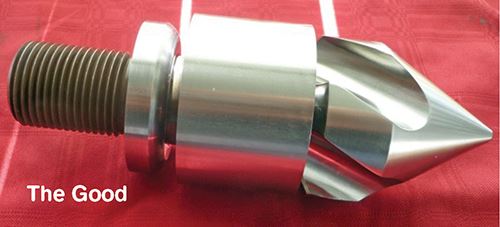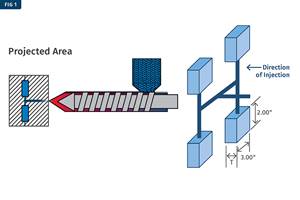Screw Decompress Before Screw Rotate
Injection Molding Know How
Thoughtfully determining when to start screw rotation to build the charge for the next shot can reduce the wear and tear on the screw tip, check valve, and screw motor.
When developing a molding process that will run 24/7, most details are unique to the mold, machine, and part. But there are a few that should be applied to all processes. One is when to start screw rotation to build the charge for the next shot size. While not a critical topic, it is one of those pesky details that deserve some thought.
Doing this thoughtfully can reduce the wear and tear on the screw tip, check valve, and screw motor. Less wear, especially on the check valve, will provide more consistent parts and a more robust process. This equates to better profits.
Many molders don’t pay all that much attention to when they start screw rotation. “Just let it start when the second stage (pack and hold) times out. It’s no big deal anyway, and we don’t want to extend the cycle.” Does that sound like you?
My advice is to think it through. Take a typical process, and think of the typical second-stage pressure you are using. Then, if it is hydraulic pressure, convert it to plastic pressure by multiplying your set hold pressure by the machine/screw intensification ratio. (If it is an electric machine the pressure setting will already be in plastic pressure, so there is no need to convert.)
Let’s take a look at a process using 8000 psi plastic pressure as your second-stage pressure. This is the pressure on the molten polymer directly in front of the screw that the check valve is pushing against. This is the pressure pushing the check ring closed. Consider the sequence of the cycle. When the second-stage or hold timer times out, what does the controller tell the machine to do next? Within a heartbeat it tells the screw to start rotating.
Plastic is compressible, and even though the hold pressure will start dropping immediately, think about the torque required to turn the screw with something near 8000 psi pushing on it. Think about the grinding action between the check-valve seat and the check ring. Both are known to be high-wear items to begin with. Don’t add to the probability of significantly more wear for no reason.
Instead, program the controller to have a screw-rotate delay time of 0.1 to 0.5 sec to allow the pressure to bleed down. Or, program the controller to pull the screw back a fraction of an inch before screw rotation to accomplish the same pressure drawdown. Then start screw rotate.
While I am not one to design my process around being kind and gentle to the molding machine, doing this will help the check valve last a bit longer. I can’t quantify this, and it is not a variable to be computer simulated. But what you and I both know is how often these check valves need to be replaced or checked during preventive maintenance. Changing the check valve is a time-consuming and costly repair.
What are the benefits of this approach? If less torque is required to turn the screw, there will be less wear and a longer life for the screw motor. Decompression also allows the sliding ring to pull off the seat, and when the screw does start to turn you’ll get much less grinding action between the ring and seat. This translates into less wear on a high-wear, problematic piece of the screw assembly. The real benefit would be better cushion repeatability and more consistent parts—equalling a few more dollars in your pocket.
Related Content
Is There a More Accurate Means to Calculate Tonnage?
Molders have long used the projected area of the parts and runner to guesstimate how much tonnage is required to mold a part without flash, but there’s a more precise methodology.
Read MoreProcess Monitoring or Production Monitoring—Why Not Both?
Molders looking to both monitor an injection molding process effectively and manage production can definitely do both with tools available today, but the question is how best to tackle these twin challenges.
Read MoreKnow Your Options in Injection Machine Nozzles
Improvements in nozzle design in recent years overcome some of the limitations of previous filter, mixing, and shut-off nozzles.
Read MoreA Systematic Approach to Process Development
The path to a no-baby-sitting injection molding process is paved with data and can be found by following certain steps.
Read MoreRead Next
Lead the Conversation, Change the Conversation
Coverage of single-use plastics can be both misleading and demoralizing. Here are 10 tips for changing the perception of the plastics industry at your company and in your community.
Read MoreSee Recyclers Close the Loop on Trade Show Production Scrap at NPE2024
A collaboration between show organizer PLASTICS, recycler CPR and size reduction experts WEIMA and Conair recovered and recycled all production scrap at NPE2024.
Read More
.jpg;width=70;height=70;mode=crop)














